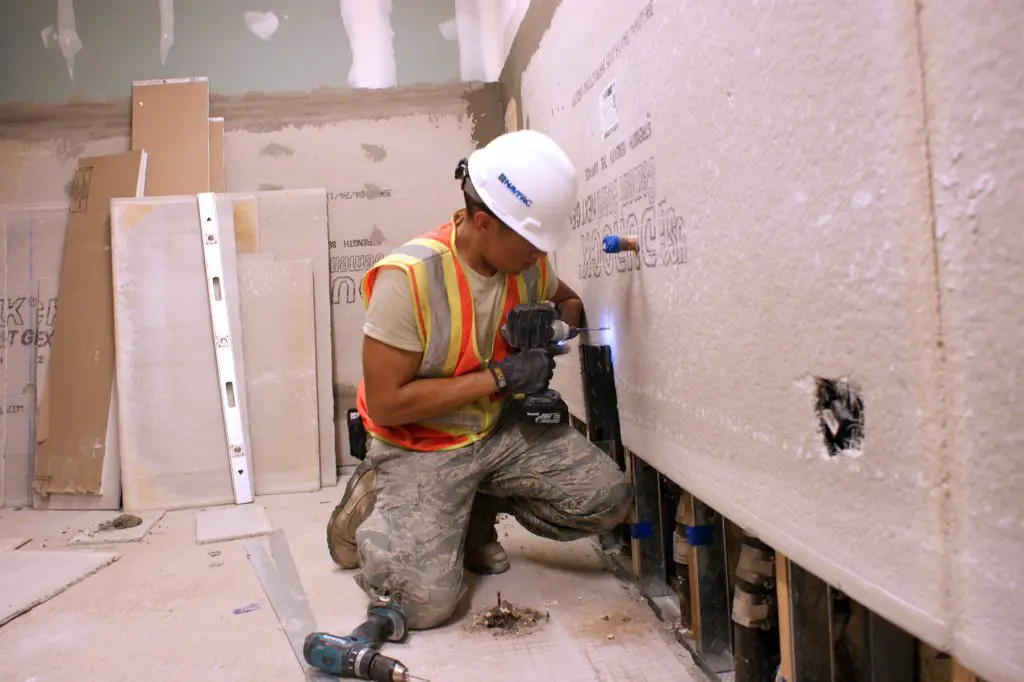Drywall is more than just a backdrop for your home. It’s a canvas where you can express style and personality. Different textures and finishes can change the whole feel of a room. In this article, we’ll guide you through some popular drywall texture styles and finishes. Whether you’re renovating or building from scratch, this guide will help you make an informed choice.
Contents
Types of Drywall Texture
Drywall texture offers many options for homeowners and builders. Each texture style has its unique look and application process. They add depth, personality, and a touch of flair to your walls. From the rustic appeal of knockdown to the subtlety of orange peel, there’s a texture for every taste.
In this section, we dive into these types, starting with one of the most recognizable: the popcorn texture.
Popcorn
Popcorn texture is one of the most well-known drywall finishes. It’s called “popcorn” because its appearance looks like popcorn kernels. Often used on ceilings, this texture helps mask imperfections and offers good sound insulation.
How is it Applied?
Applying popcorn texture involves a specific spray gun designed for this purpose. The drywall surface must be clean and primed. A mixture of dry texture and water is loaded into the spray gun. With a steady hand, you spray the mixture onto the ceiling. It’s important to maintain uniform coverage to ensure a consistent look.
What’s the Appeal?
The main appeal of popcorn texture lies in its ability to hide flaws. Ceilings are notorious for showing imperfections, and a popcorn finish does an excellent job of masking them. Another advantage is sound dampening. The thick texture helps to absorb sound, making rooms quieter, perfect for living room and bedroom indoor spaces.
Points to Consider
While popcorn texture has its benefits, it also comes with some drawbacks. It can be difficult to clean and is known to collect dust. Some people also find it outdated, preferring smoother textures for a modern look. Yet, if you live in an older home or value its noise-canceling ability, popcorn texture remains a solid choice.
Popcorn texture has been a go-to option for many years, especially for ceilings. Its unique look and functional benefits, like sound insulation and flaw coverage, make it a popular choice for many homeowners. However, it may not suit everyone’s aesthetic or maintenance preferences. Choose it if you’re looking for a classic, functional finish for your ceilings.
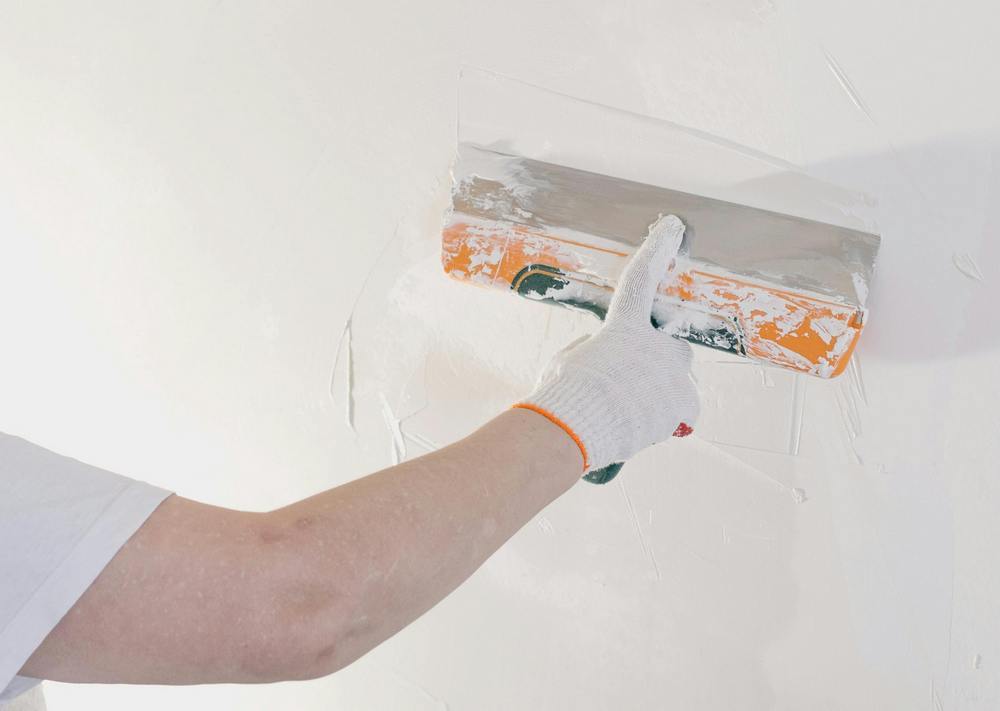
Sand
Sand texture gives your walls a fine, granular appearance, almost like a sandy beach. This texture is versatile and works well on both walls and ceilings. It adds a touch of sophistication and depth to any space.
How is it Applied?
To create a sand texture, you’ll need to mix a sandy compound with paint or primer. The mixture is then applied using either a roller or a spray gun. The trick is to apply it uniformly to distribute the sand particles evenly across the surface. After the first coat dries, you may want to add a second coat to enhance the texture.
What’s the Appeal?
The appeal of sand texture lies in its understated elegance. The fine grains add depth and character without overwhelming the space. It’s a favorite for those who want a textured look that’s not too bold but adds interest. This texture also hides minor wall imperfections quite well.
Points to Consider
Sand texture is easier to clean than more intricate textures like popcorn, but it still requires some care. Use a soft cloth for routine cleaning to avoid dislodging the sand particles. The sand texture could be the right choice for a classy, low-maintenance look.
To summarize, sand texture offers a delicate yet impactful design element to your walls or ceilings. It’s relatively easy to apply and balances style and simplicity. Sand texture is a versatile option to mask wall flaws or elevate your room’s aesthetics.
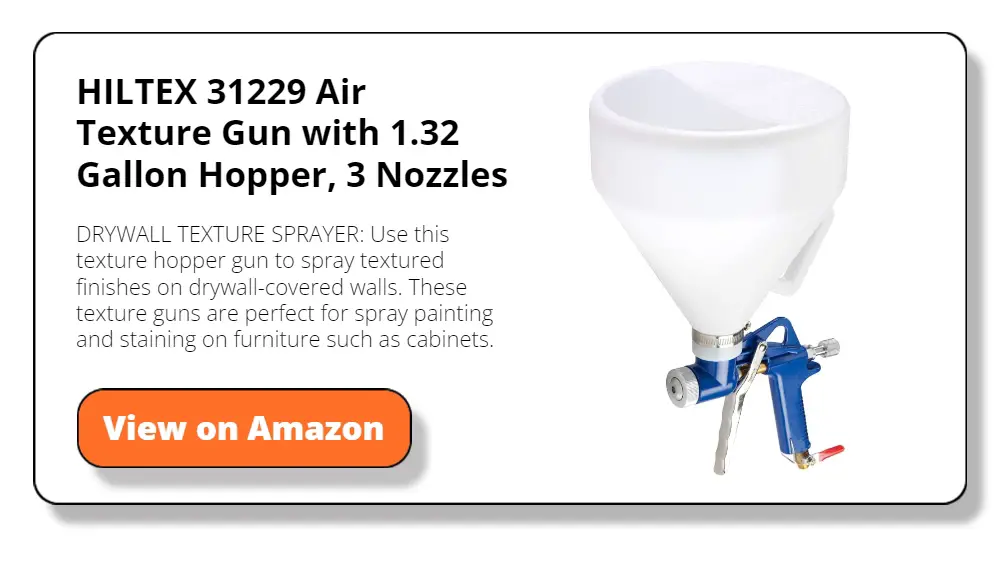
Stomp Brush
Stomp brush texture creates a pattern resembling stomped mud or irregular waves on your walls or ceilings. This texture is known for its rustic, earthy vibe and adds a dramatic effect to any room.
How is it Applied?
To achieve this texture, you’ll use a specialized stomp brush. First, apply a layer of joint compound or mud to the drywall. Then, press the stomp brush into the wet surface and pull it away quickly. The key is to rotate the brush slightly with each stomp to create a random pattern. Once dry, you can paint over it to match your room’s color scheme.
What’s the Appeal?
Stomp brush texture adds a unique and artistic element to your space. It creates depth and shadow, making walls more visually interesting. People love its ability to give a room a custom, handcrafted feel.
Points to Consider
While stomp brush texture is captivating, it’s also among the more challenging textures. The process is labor-intensive and might require some practice to get it just right. Additionally, this texture can collect dust, so it may not be the best choice for those with allergies.
In conclusion, stomp brush texture is for those looking to make a bold statement. Its intricate design and depth add character to any room. But remember, this texture may require more effort in application and maintenance. If you’re up for the challenge, it’s a style that will impress.
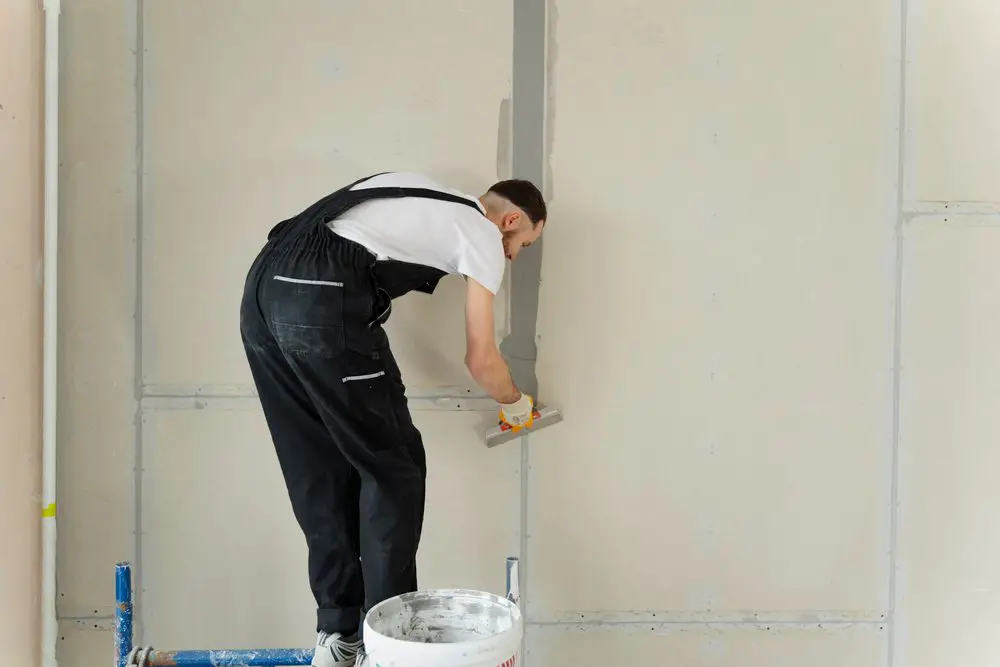
Skip Trowel
Skip trowel texture gives walls and ceilings a subtle, elegant appearance. The texture resembles a light stucco finish, adding a Mediterranean feel to the room. It’s a versatile choice, fitting well in both modern and traditional spaces.
How is it Applied?
Applying skip trowel texture requires a flat trowel and joint compound. You’ll spread a thin compound layer onto the surface, skipping areas to create an irregular pattern. The goal is to make the texture look random yet balanced. Once it dries, you can paint over it to complete the look.
What’s the Appeal?
The appeal of skip trowel texture lies in its understated sophistication. It adds dimension and interest to your walls without being too flashy. This texture is easier to clean than complex textures, making it a practical choice for many homeowners.
Points to Consider
Skip trowel texture requires a steady hand and some skill, making it challenging for beginners. It may take a little practice to achieve the desired look. Also, the texture does show imperfections more than heavier textures like popcorn, so your wall prep needs to be spot-on.
This Drywall texture offers an elegant, versatile finish that elevates the look of any room. It does require some skill to apply, but the result is a stylish and relatively low-maintenance surface. If you’re seeking a texture that combines beauty with practicality, a skip trowel could be your perfect match.

Smooth
Smooth texture is the simplest and cleanest of all drywall finishes. It offers a flat, untextured surface, providing a modern, minimalist look. This texture is often seen in contemporary homes and commercial spaces.
How is it Applied?
Achieving a smooth texture requires careful preparation. The drywall must be sanded and primed to a perfect finish. You’ll apply several coats of joint compound, sanding between each layer. The aim is to create a smooth surface almost resembling a single piece.
What’s the Appeal
The appeal of smooth texture lies in its simplicity and versatility. It is a blank canvas, allowing furniture and decorations to take center stage. It’s also the easiest texture to clean, as no grooves or bumps trap dust.
Points to Consider
While smooth texture looks simple, achieving that flawless finish can be challenging. Any imperfections in the drywall or application process will stand out. Therefore, this texture often requires the skills of an experienced professional to get it just right.
To summarize, smooth texture is the go-to option for those who love a sleek, modern look. It offers a pristine backdrop for any design style but requires meticulous preparation and application. A smooth texture is worth considering if you’re after a minimalist vibe and are willing to put in the extra effort.

Knockdown
Knockdown texture is known for its mottled, natural appearance. It looks somewhat like stucco and gives the room a warm, earthy feel. This highly versatile texture works well in various settings, from casual to more refined spaces.
How is it Applied?
To apply knockdown texture, spray a mixture of water and joint compound onto the wall or ceiling using a spray gun. Before it dries completely, you’ll take a drywall knife and gently “knock down” the peaks, smoothing them out. It creates the unique flattened appearance that is characteristic of this texture.
What’s the Appeal?
The appeal of knockdown texture lies in its ability to add depth and complexity to a room. It catches light interestingly, creating shadows and highlights on your walls. It’s also good at hiding wall imperfections, making it beautiful and practical.
Points to Consider
While knockdown texture offers a rich look, applying it can be challenging. Timing is crucial; wait too long to knock down the peaks, and you won’t achieve the desired effect. It’s also a bit more difficult to clean than smoother textures due to its uneven surface.
Knockdown texture is a popular choice for those looking for a textured wall that offers visual interest and functionality. Though it may require some skill to get right, the result is a unique, eye-catching surface that can elevate the aesthetic of any room.
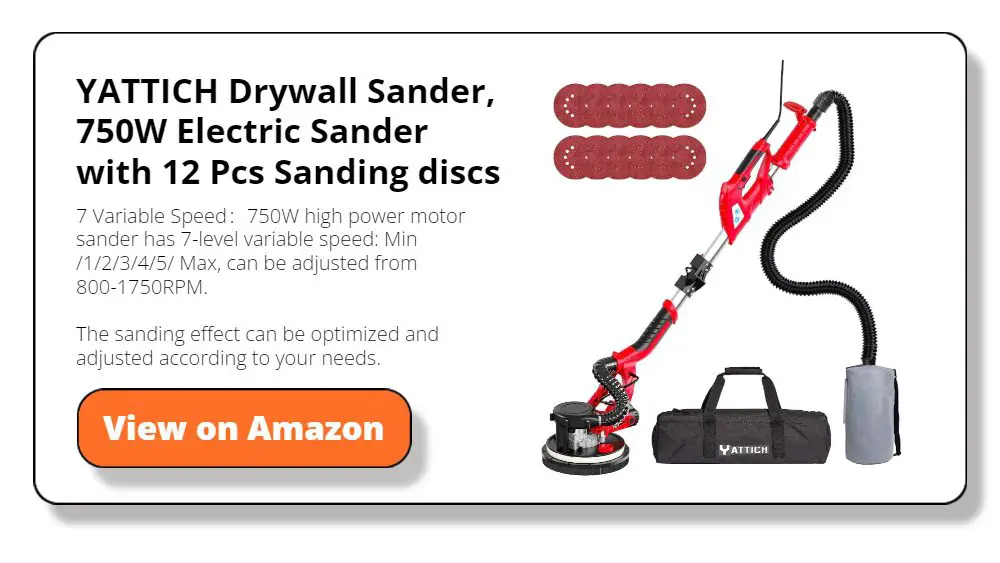
Tools You Need
Getting the right texture on your drywall isn’t just about technique; it’s also about using the right tools. The tools you choose can make a huge difference in how your texture turns out.
Below, we’ll discuss some essential tools you’ll need to create various drywall textures. Each tool has advantages and specific uses that make it vital for certain textures.
Spray Guns
Spray guns are essential for achieving textures like popcorn and orange peel. They allow for a quick and even application of texture material over large areas. The spray gun atomizes the texture mixture and sprays it onto the surface, creating a uniform layer. This tool is great for big projects where speed and efficiency are key.
Get a high-grade Air Texture Gun that gives you a comfortable grip and easy trigger. Both of its qualities make applying the texture you want on your drywall easier.
Hand Trowels
Hand trowels are your go-to tool for textures like skip trowels and knockdown. These textures require a more hands-on, artisan approach. A hand trowel gives you the control to spread and shape the texture compound precisely. This tool is crucial for a more customized, crafted look on your walls or ceilings.
Rollers
Rollers are perfect for applying sand texture and other rolled-on finishes. They provide a simple yet effective way to apply texture evenly across a surface. Using a roller helps distribute the texture material in a controlled manner, making it easier to achieve a uniform look. Rollers are ideal for those new to drywall texturing and want an easier application method.
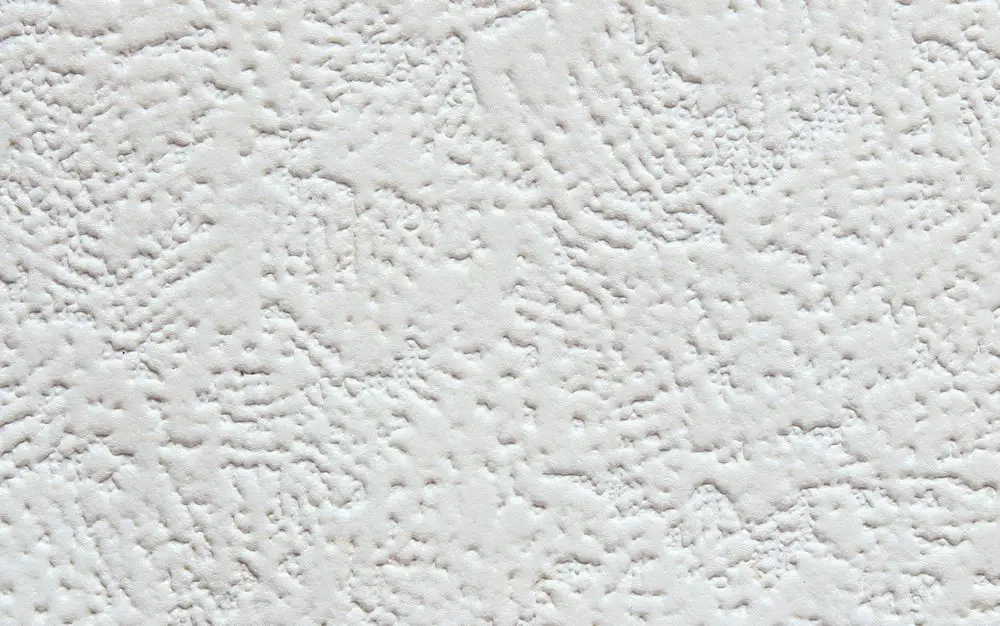
Drywall Texture Troubleshooting
Creating the perfect drywall texture can be a rewarding yet challenging task. Even with the right tools and techniques, you might face some problems. This section covers common issues arising during the application process and offers solutions to fix or avoid them.
Inconsistent Texture
One common issue is inconsistent texture; some areas look thicker or lumpier than others.
How to Fix or Avoid: Maintaining a consistent hand motion and pressure when applying the texture is key. Whether using a spray gun, trowel, or roller, practice on a scrap piece of drywall first to get the hang of it.
Drying Too Fast
If the texture dries too quickly, it can crack or not adhere properly to the surface.
How to Fix or Avoid: Apply the texture in a controlled environment. Avoid working in extreme temperatures or under direct sunlight. You can lightly mist the surface with water before applying the texture to slow drying.
Poor Adhesion
Sometimes, the texture doesn’t stick well, causing it to peel or flake off after drying.
How to Fix or Avoid: Always clean and prime your drywall surface before applying any texture to ensure good adhesion. Ensure the surface is free of dust, grease, or other contaminants.
Imperfections Showing Through
The whole point of adding texture is often to hide imperfections, but sometimes, they can still show through.
How to Fix or Avoid: Spend extra time preparing your wall. Fill in any holes or cracks with the joint compound and sand the surface smoothly before you start with the texture.
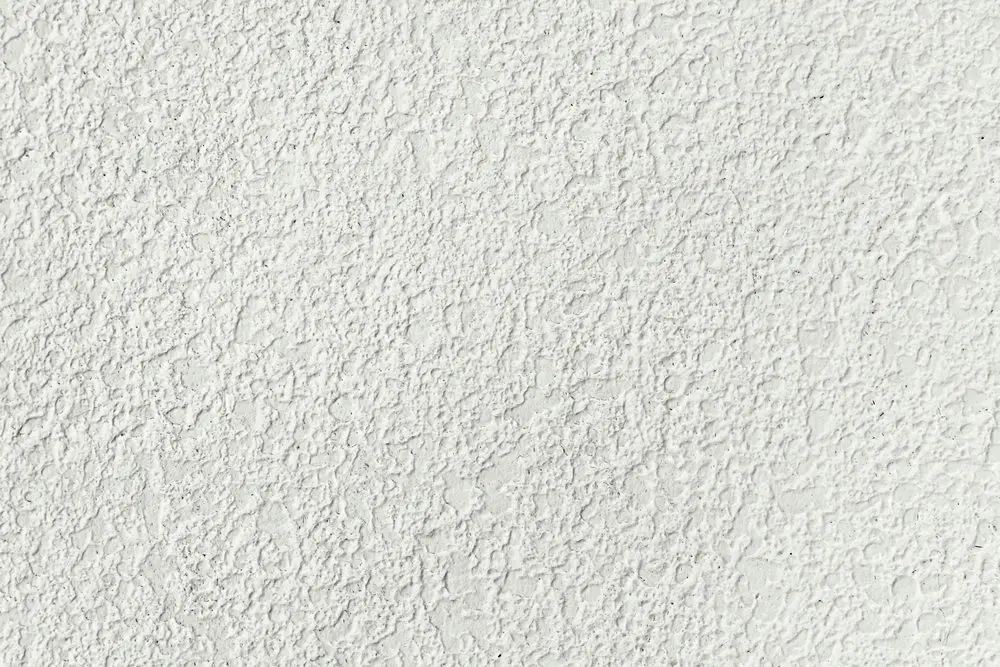
FAQ
What is the easiest drywall texture to apply?
The easiest drywall texture to apply is often the sand texture. Using a paint roller, you can apply it relatively quickly, and it’s forgiving for beginners.
How do I choose the right drywall texture?
Consider your home’s style, skill level, and the room where the texture will be applied. Different textures suit different spaces and personal preferences.
Can I apply a new texture over an old one?
It is crucial to prepare the old surface properly. This may involve sanding or priming to ensure the new texture adheres well.
Is it better to DIY or hire a professional?
A DIY approach could save you money if you’re experienced in home improvement. However, some textures require a skilled hand, so hiring a professional is advisable for complex jobs.
How do I clean textured walls?
The cleaning method depends on the type of texture. Smooth textures are the easiest to clean, while more intricate textures may require a soft brush to get into the grooves.
Conclusion
Adding texture to your drywall can drastically change the look and feel of your space. Whether you prefer the rustic appeal of stomp brush, the elegant simplicity of smooth texture, or anything in between, there’s a drywall texture to suit your style.
It’s essential to pick the right tools and be aware of common pitfalls to achieve the best results. With some knowledge and preparation, you can transform your walls into a beautiful canvas that complements your home’s decor.

